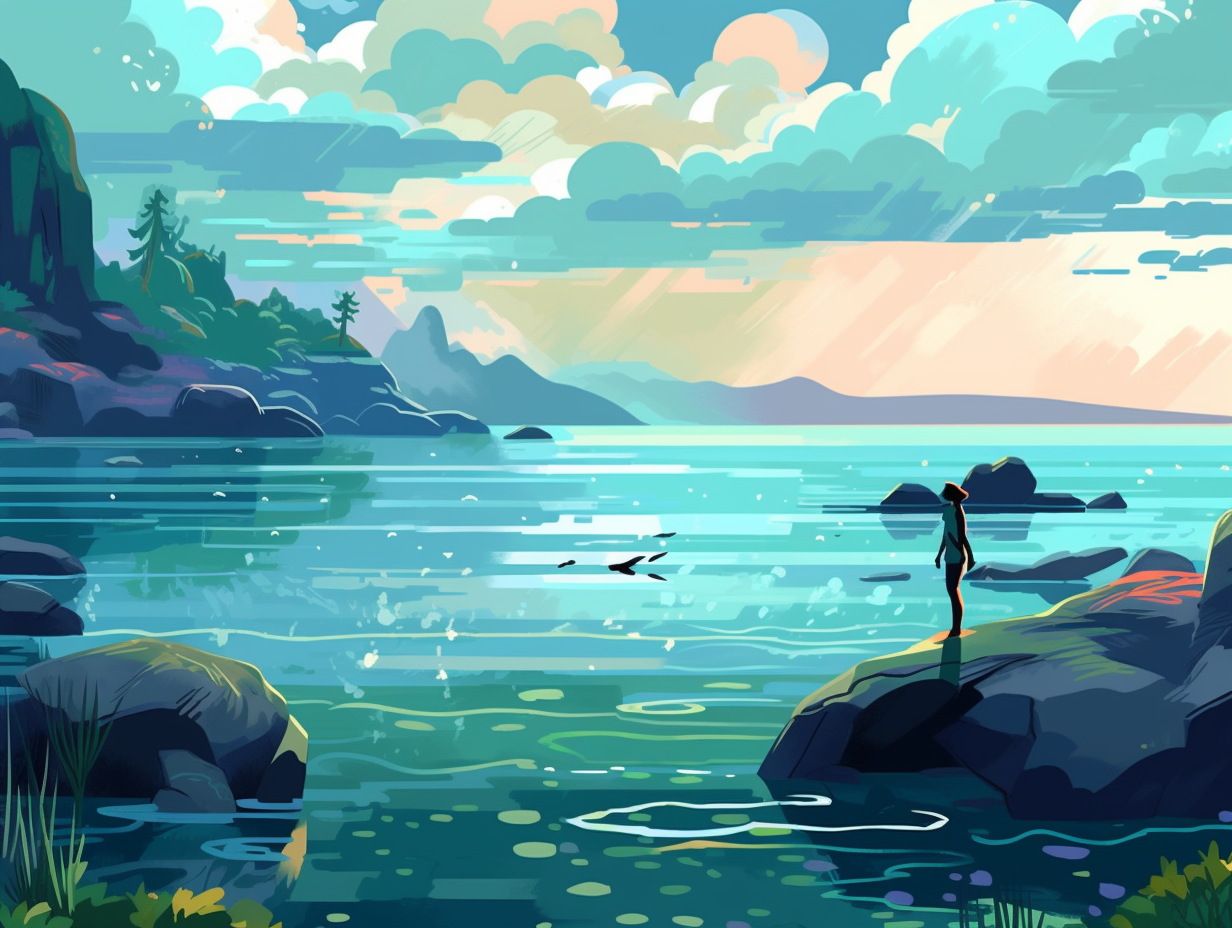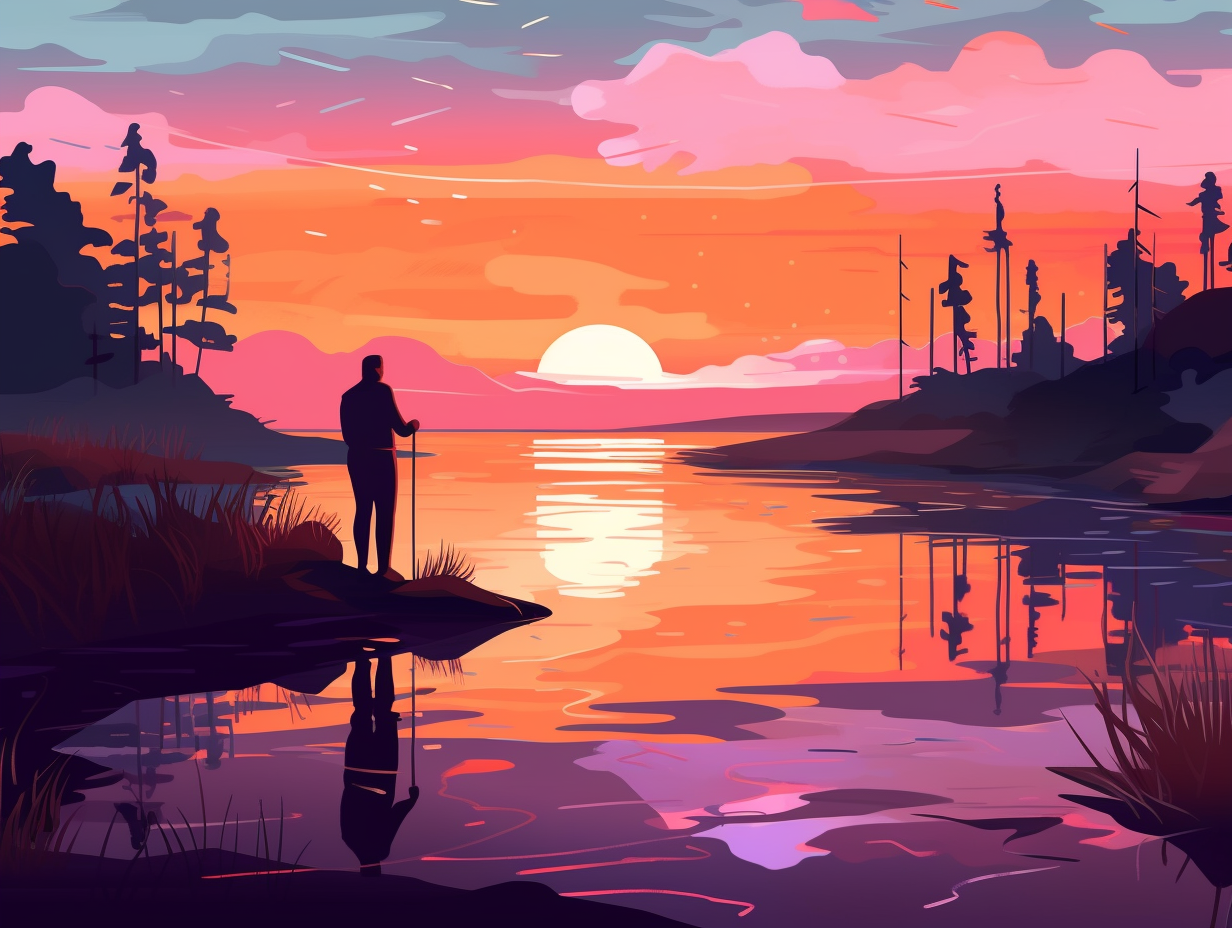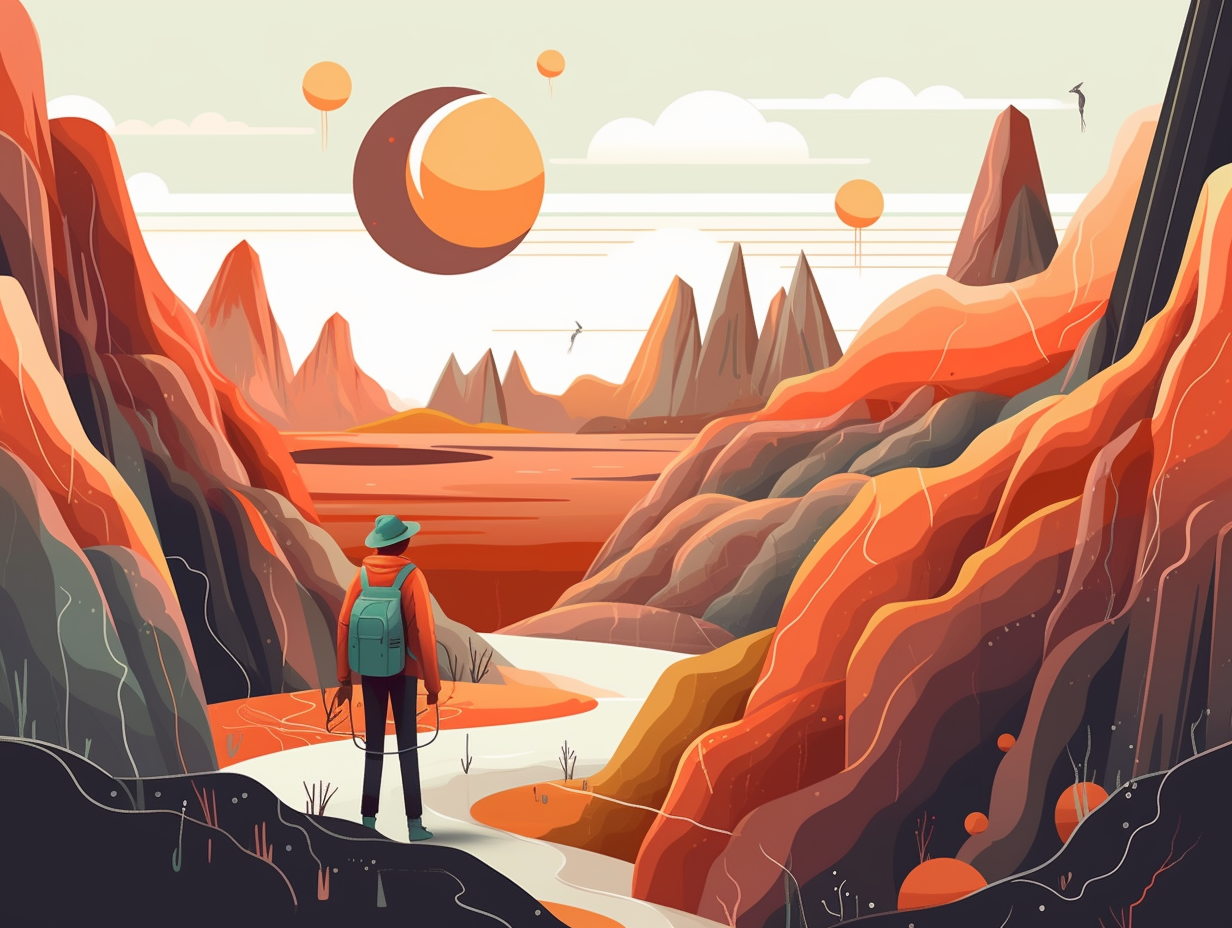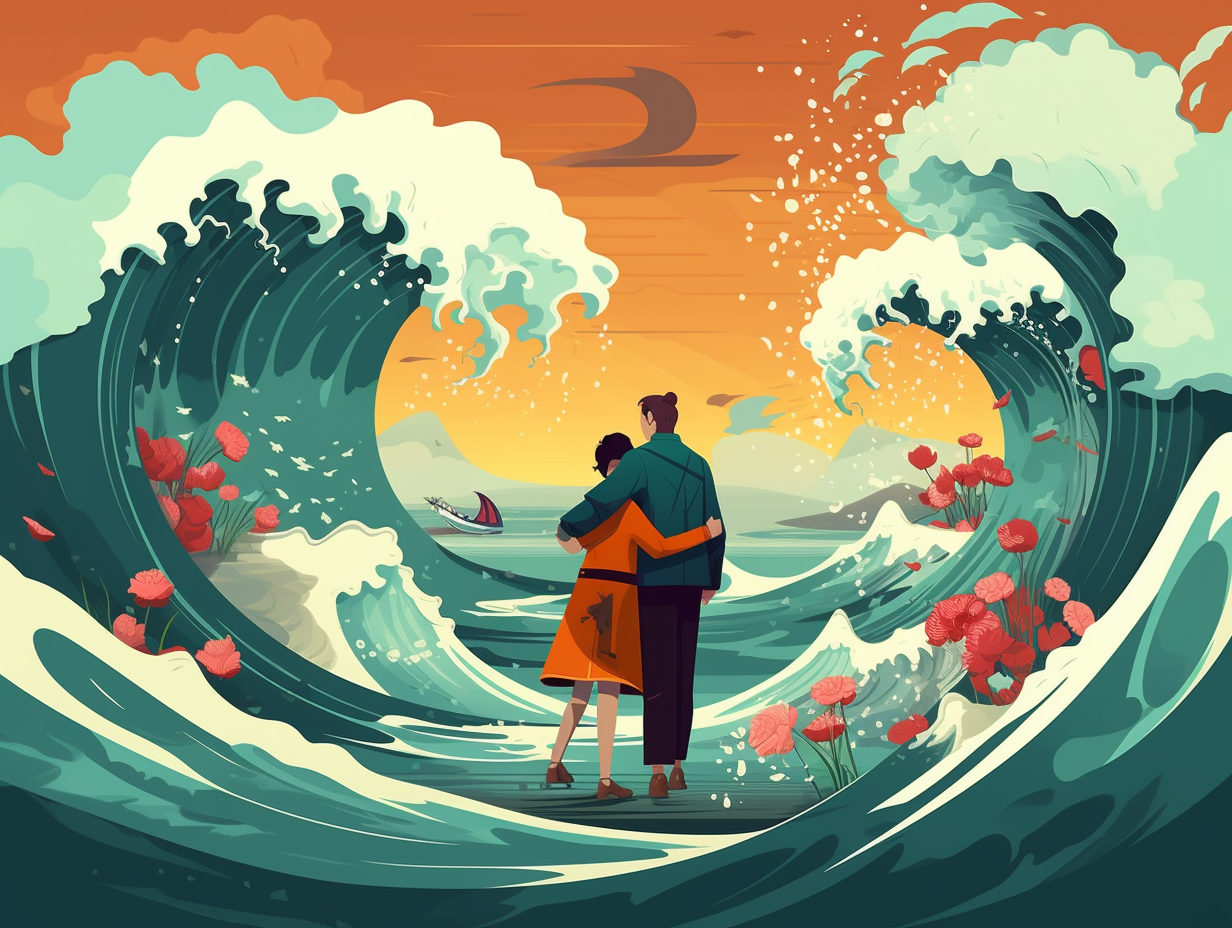Riding the Waves: 14 Amazing and Entertaining Facts About Tides You Never Knew!

1. Celestial Tango: Moon and Sun's Tidal Dance
Lunar lunacy and solar swoons: The tides are not solely a moon affair, but also a sun dance! While the moon takes the lead in this gravitational tango, the sun too exerts its pull, causing extreme tides called spring tides when the trio lines up, and milder neap tides when they decide to sashay at right angles. That oceanic rollercoaster you adore at the beach? Thank the celestial dance partners moon and sun!
Source => scijinks.gov
2. Bathtub Drama: Bay of Fundy's Record Tide
Hold onto your rubber duckies, folks, because we're setting sail for the bathtub drama of the century: The Bay of Fundy in Canada is home to the world's highest tidal difference, reaching a staggering 16 meters (53ft) in the Minas Basin, making it a natural wonder you won't want to miss!
Source => bayoffundy.com

Dive into the depths of the Mariana Trench and discover the incredible pressure that awaits you, equivalent to having five jumbo jets stacked on top of you! Uncover more mind-blowing ocean facts 🌊
=> Fun Facts about The-Ocean
3. Earth's Bouncy Dance with Moon and Sun
Next time you blame your missteps on the Earth moving beneath your feet, consider this titillating tidbit: the Earth is constantly experiencing ups and downs, thanks to its indecisive dance partner—the Moon! But hold onto your hats, folks: these meter-level displacements in the solid Earth's surface, known as Earth tides, are not caused by tidal forces themselves but by an interplay between the gravitational pull of the Moon and Sun, leaving our planet perpetually bouncing to their cosmic rhythms.
Source => en.wikipedia.org
4. Mother Earth's Tidal Rhythm Confusion
Just like a Moana sing-along, Mother Earth's oceans can't seem to decide which tidal rhythm to dance along to: Depending on their location, some areas experience diurnal tides (one high and one low tide each day), semidiurnal tides (two high and two low tides of equal size), or mixed semidiurnal tides (two high and two low tides of different size). The Gulf of Mexico enjoys a diurnal tide solo, while the West Coast of North America grooves to a mixed-semidiurnal beat, and the East Coast moves to the tune of semidiurnal tides.
Source => oceanservice.noaa.gov

5. Tidal Rollercoasters with 50-Foot Dips
Mother Nature's rollercoaster: offering rides with dips up to 50 feet depending on your destination! In locations such as the Bay of Fundy in Canada, tidal ranges can reach a whopping 50 feet, while others experience mere inches, all thanks to factors like coastline shape, water depth, and surrounding geography. This natural phenomenon is truly a tidal attraction!
Source => oceanservice.noaa.gov
6. Tug of War: Moon, Earth, and Sun Distances
When the moon and Earth play a game of tug of war while the sun bets on the outcome: tidal patterns are greatly influenced not only by the moon but also by their varying distances from Earth, with higher ranges when the moon is closest (perigee) and the Earth is nearest to the sun (perihelion), and lower ranges when the moon is farthest (apogee) or Earth is farthest from the sun (aphelion), causing monthly, yearly, and even longer-term shifts in the tides.
Source => oceanservice.noaa.gov
7. Moon Catches Tides Changing
Why did the tides blush? Because the moon caught them changing! That's right, folks: Coastal areas experience two high tides and two low tides every 24 hours and 50 minutes due to the gravitational influence of the moon on Earth's oceans, with high tides occurring 12 hours and 25 minutes apart, and six hours and 12.5 minutes for the water to go from high to low, or vice versa.
Source => oceanservice.noaa.gov
8. Tidal Bore: The Wave Party Crasher
Did you hear about the rowdy party crasher that shows up unannounced to make some waves? Meet the tidal bore: This rare phenomenon occurs when specific conditions - a fairly shallow river with a narrow outlet to the sea, a wide and flat estuary, and a tidal range of at least 6 meters (about 20 feet) - are met, causing a true tidal wave to push upriver against the current and give our oceans a bit more pizzazz.
Source => nationalgeographic.org
9. Tides Surf on Complex Influences
Mother Nature loves to surf, and tides are her gnarly waves – they may seem like an epic moon-powered ride, but there's much more going on beneath the surface: Tides are influenced by various factors like Earth's bulging shape at the Equator, land masses, and differing surface heights which result in complex variations in gravitational forces, as well as lag times between the moon's position and tidal events that depend on geographical features such as the continental rise, slope, and shelf, making predictions from over 3,000 locations crucial to NOAA's observations.
Source => oceanservice.noaa.gov

10. Tidal Energy Potential: Newton's Wave
As the great Sir Isaac Newton once (almost) said, "For every tidal action, there's an opportunity for power generation": Three methods exist for generating tidal energy - tidal streams, barrages, and tidal lagoons, with the world's largest facility being the Sihwa Lake Tidal Power Station in South Korea. While still in its early stages, engineers are seeking to enhance the technology and find ways to maximize tidal energy production, even though a handful of hurdles, such as environmental impact and the legality of underwater land ownership, keep the U.S. from fully diving into this renewable energy source.
Source => nationalgeographic.org
11. Astronomical Synchronized Duets: Tidal Locking
In a celestial dance that would make even the best tango partners green with envy, astronomical objects like Pluto and Charon waltz with perfect, unerring synchronicity: a phenomenon known as tidal locking causes these cosmic duos to always show each other the same face, spinning on their axes at the precise rate they orbit one another. This intimate astronomic embrace is not exclusive to our Moon but is actually quite the norm among large moons in the Solar System.
Source => en.wikipedia.org
12. Galileo's Heartbreak: Tidal Misunderstanding
Feeling a bit "tide" down by his theories, Galileo Galilei once thought that tides were the Earth's way of getting a little too close to the Sun, followed by cosmic heartbreak and withdrawal: In reality, his explanation linking the ebb and flow of tides to the Earth's motion around the Sun and its rotation on its axis missed the mark completely, and led to his condemnation by the Inquisition and lifelong house arrest. Who knew making waves could be so troublesome?
Source => mpg.de
13. Moon's Dough-Rising: Earth's Crust Tides
Ever thought the moon was flaky for having a "crust"? Well, turns out it gives Earth quite the dough-rise too: As the moon orbits around our planet, its gravitational pull causes the Earth's crust to rise and fall by a few centimeters, a phenomenon known as solid-body tides – and yes, we have the technology to measure this lunar kneading!
Source => oceanservice.noaa.gov
14. Tidal Waves vs. Tsunami Slander
In a tragic case of mistaken identity, tidal waves have long been accused of the disastrous antics of their distant cousin, tsunamis: However, tidal waves are merely the innocent outcome of the cosmic dance between the Sun, Moon, and Earth, while tsunamis are the true culprits, born from the violent rage of earthquakes, volcanic eruptions, and landslides.
Source => usgs.gov
Related Fun Facts




















